Armor in Dungeons and Dragons comes in a number of different varieties depending upon which edition that you are playing. In 1st Edition there were several types of armor available. Some types of armor were virtually never worn in 1st Edition because it was clear which ones were the best. And as soon as one could afford the best they bought the best. This, of course, does not include magical armor. But this article is not about which armor is best. This article is about what these armors were and what they actually looked like.
Plate Mail
In 1st Edition there was only one kind of plate mail. And it was the big daddy of armor. It had the best armor class. And every fighter type and cleric bought it the moment they had the money to do so. Later editions (and even later supplements for 1st Edition) made distinctions between Full Plate Mail and Half Plate. But for purposes of this article I am only going to talk about Plate Mail in general.
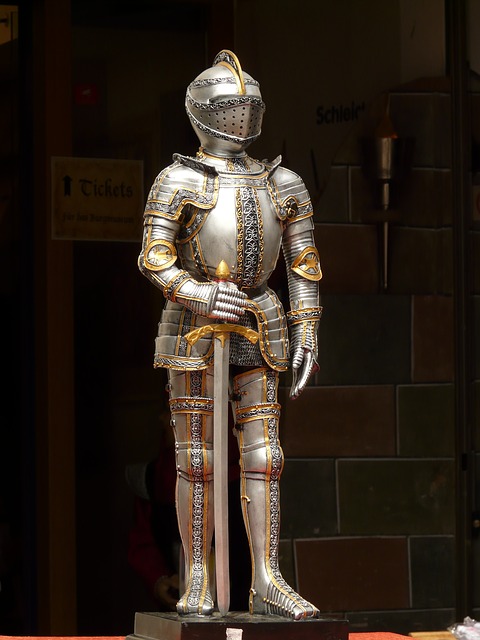
As you can see from the picture above it covers the man wearing it from head to toe. It is big and clunky and slow. The person wearing it has maximum protection but minimum agility. But for game purposes little of that matters. Plate mail was frequently worn in medieval times for things like jousting. Jousting carried a great risk of a lance finding a weak spot and kill the jousters. To prevent that a suit of Plate Mail covered every possible inch of the body with maximum protection.
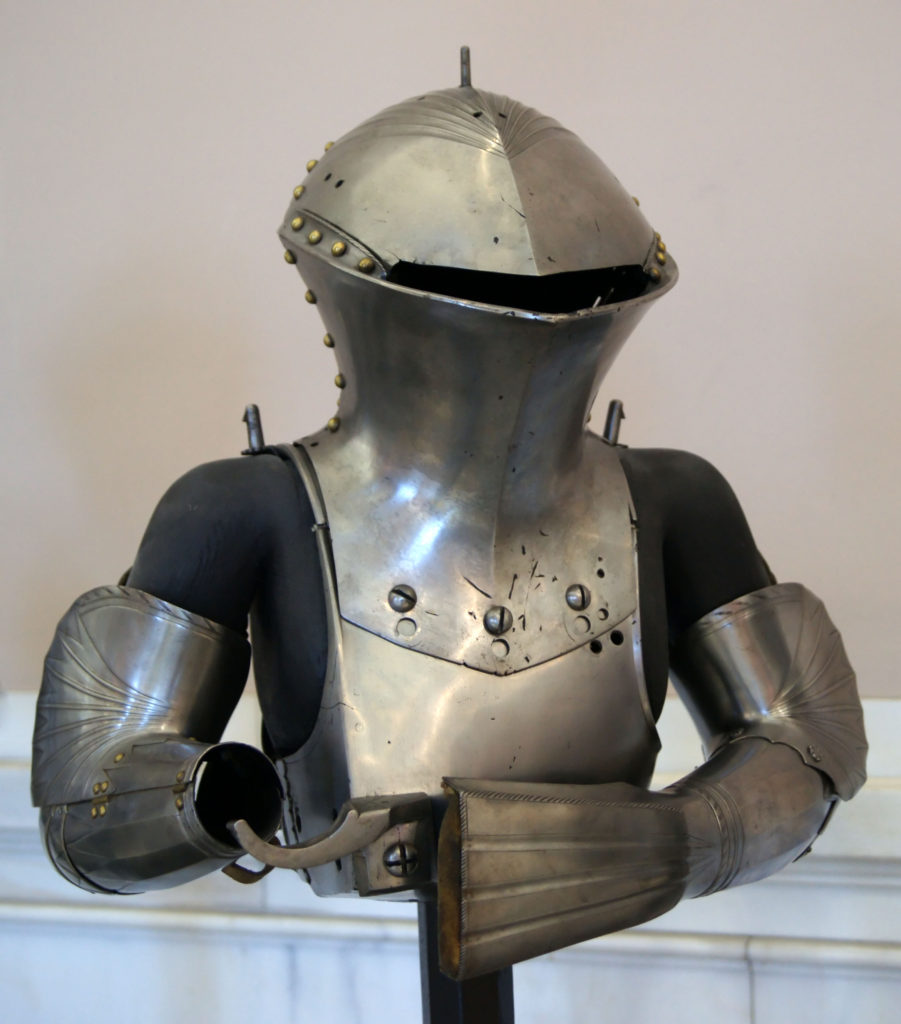
Splint Mail
The next best thing in 1st Edition was splint mail. Splint mail came in a few different varieties in medieval times. In 1st Edition there was just one. And at 1st level it was often the best armor a fighter type could afford. And that might have been a stretch. Perhaps the party might have chipped in to get the tank properly equipped. Perhaps not. In any event it was nearly as good as plate mail and costed quite a bit less.
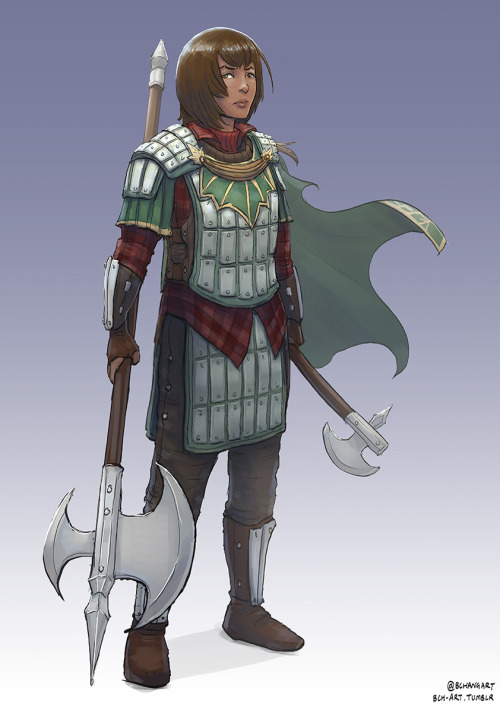
Splint mail was rarely worn in 1st edition after the first level. Fighter class characters and Clerics were the only ones capable of wearing it at all.
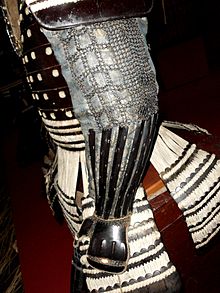
Chain Mail
Chain Mail was probably the most commonly worn armor in Europe during the middle ages for actual combat. It could provide coverage over the entire body and gave more mobility than Plate Mail. Of course, it is still, quite heavy.
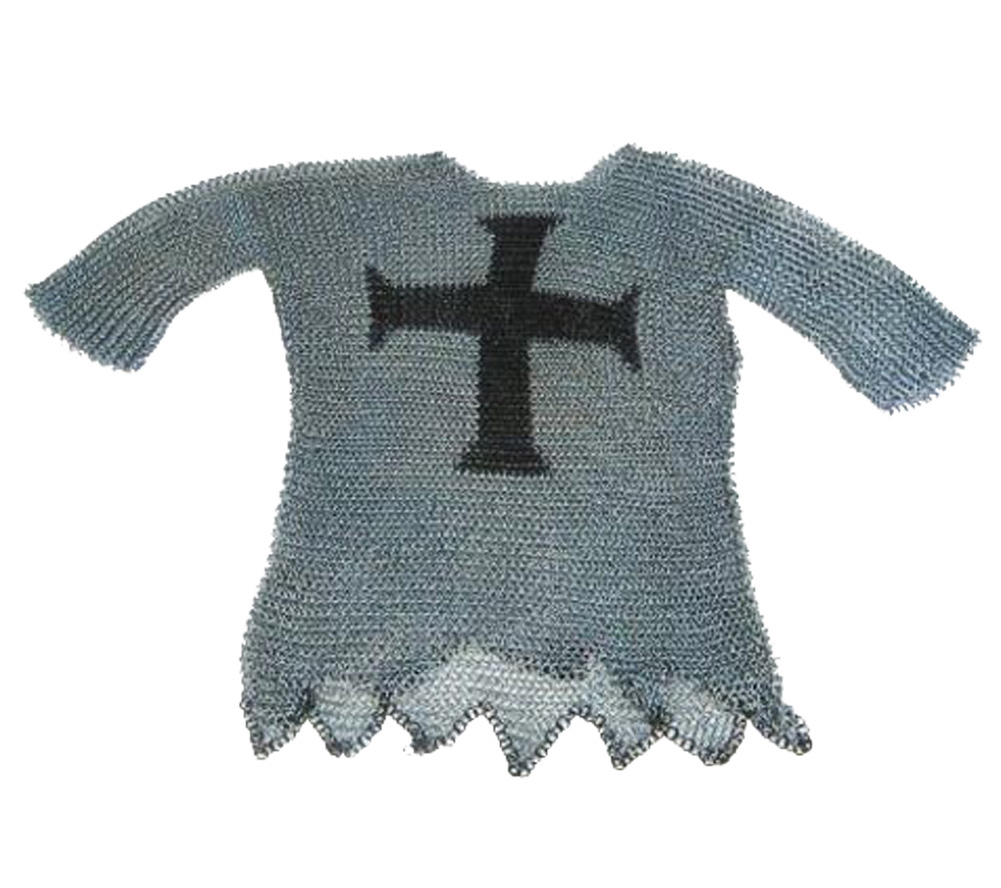
Chain Mail had interlocking metal chain. The one above was presumably used by Templars.
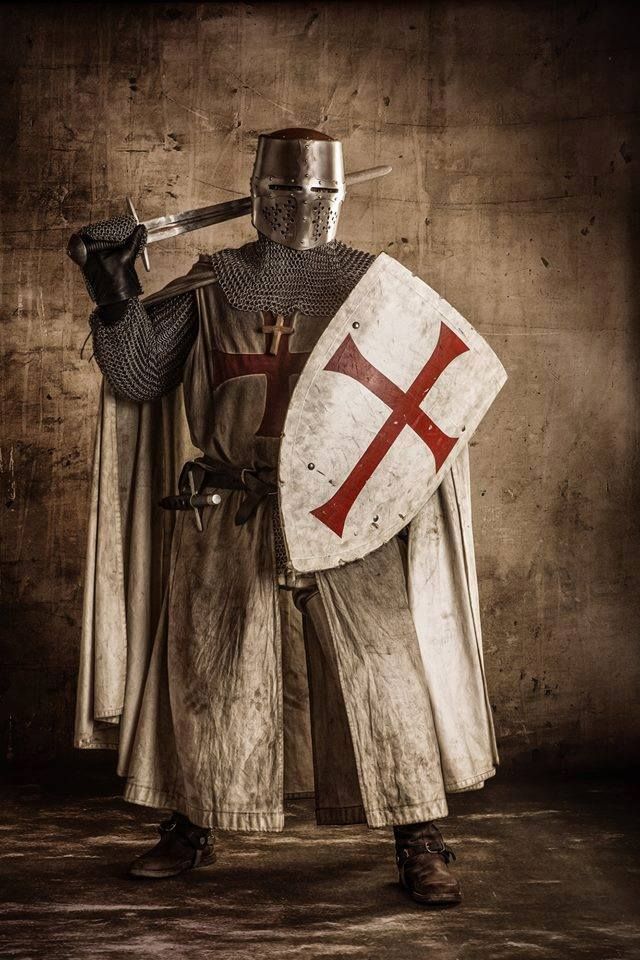
Banded Mail
Banded Mail was almost never worn by any of the players in any of my games. Some forms of armor in Dungeons and Dragons existed theoretically but were virtually never seen in any 1st Edition games. Banded Mail was one of these.
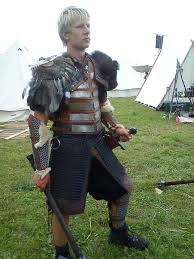
Banded Mail was basically the equivalent of Splint Mail but it costed ten more gold pieces in 1st Edition. So most people opted for Splint Mail instead until they could afford Plate Mail.
Scale Mail
Scale Mail was another rarely worn armor. Now obviously there were NPC that wore scale. Some humanoids like Hobgoblins are shown in the 1st Edition Monster Manual wearing this kind of armor.
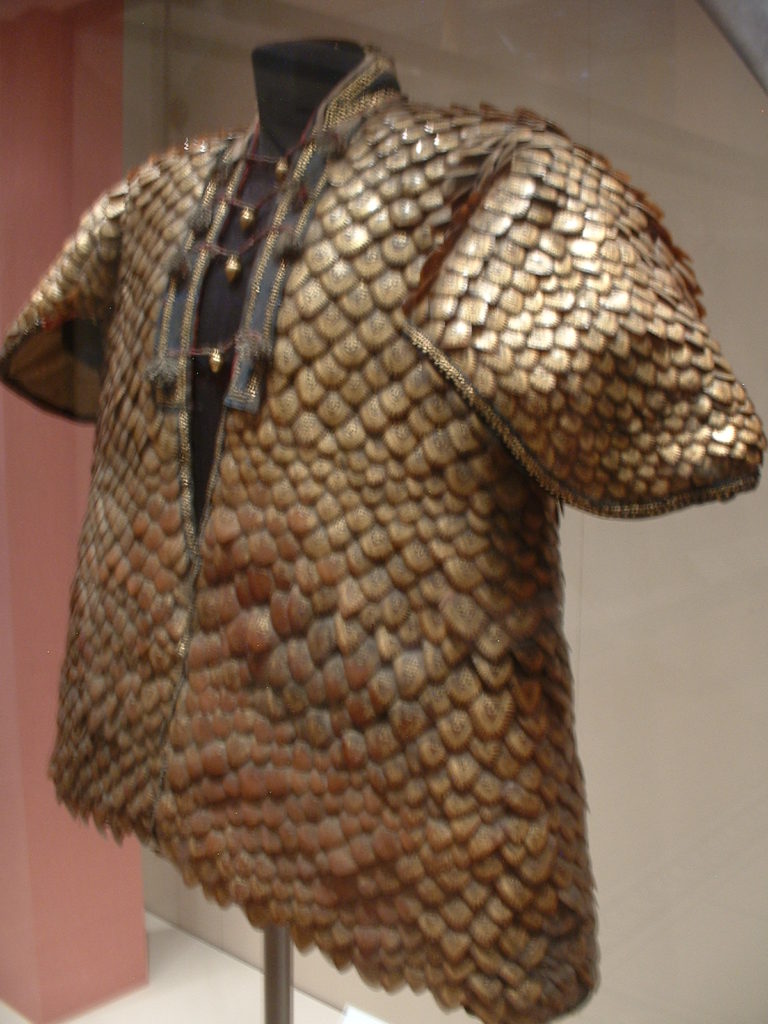
Like many of the types of armor discussed here Scale Mail came in different varieties. Often it was made from inferior metals such as bronze.
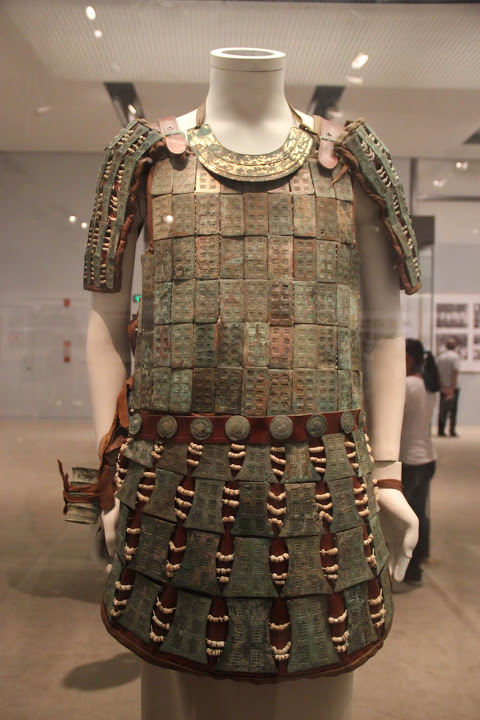
Scale Mail was clearly not as strong as Plate Mail or Chain Mail. But it did give quite a bit of protection.
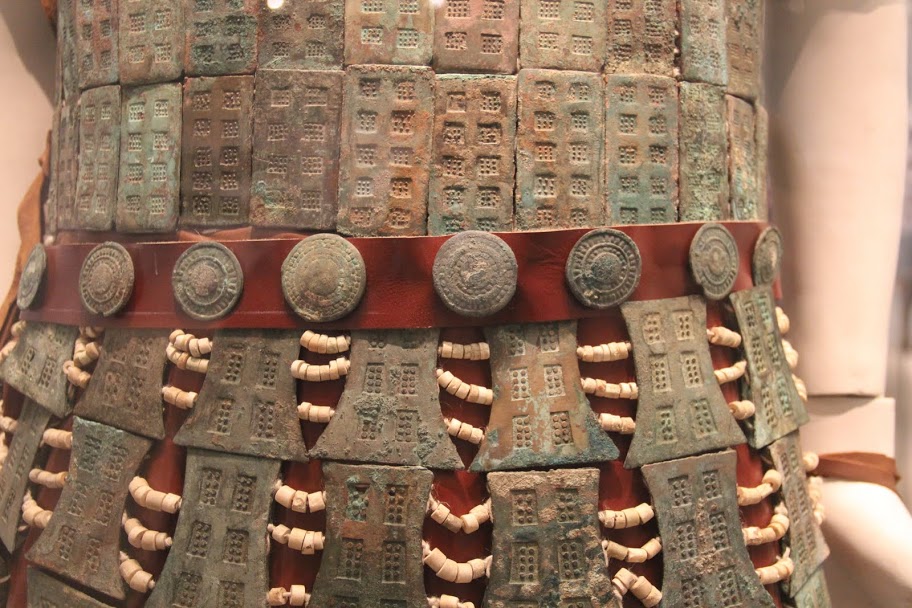
Ring Mail
The difference between Ring Mail and Chain Mail is difficult to see. In general they are very similar.
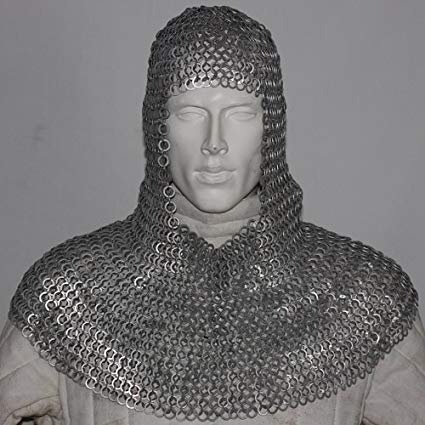
Studded Leather Armor
Studded Leather Armor gave one a little more protection than standard Leather Armor. In 1st Edition and thief or assassin could only wear leather armor. And a Druid had the same restriction. What is unclear is whether any of these could wear studded leather. It seems clear enough that a Druid could not. Because a Druid would not want to be wearing metal. But thieves and assassins were a different question.
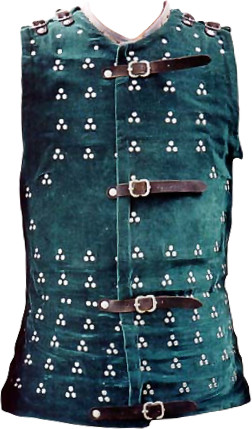
From the picture above you can see that this armor really only consisted of a leather jerkin with small metal studs in it. This really does not look like it provided a whole lot more protection than just leather.
Leather Armor
Leather Armor could be worn by Thieves, Assassins and Druids in 1st Edition. Leather armor was worn by the Romans, Celts, Vikings and others in the early centuries.
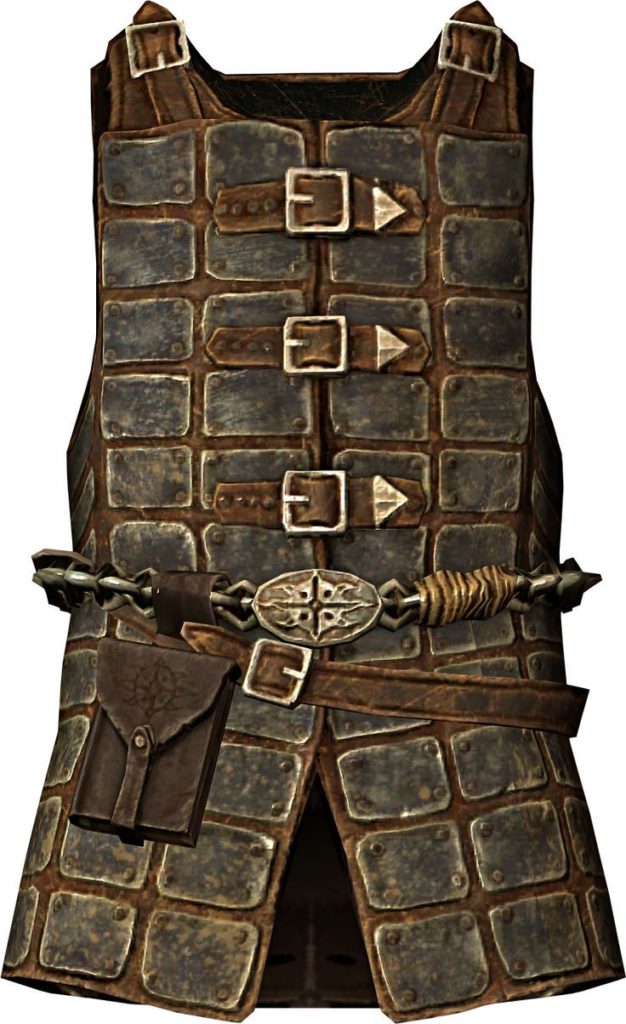
Leather Armor was dried into a tough jerkin that a sword might have trouble penetrating.
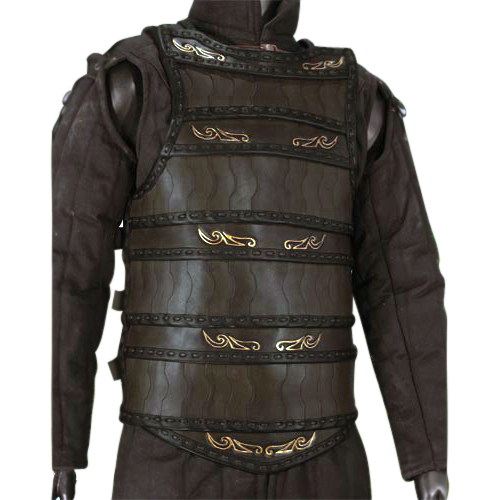
Padded Armor
Perhaps the cheapest and least effective armor is padded armor. Some vikings used padded armor for protection.
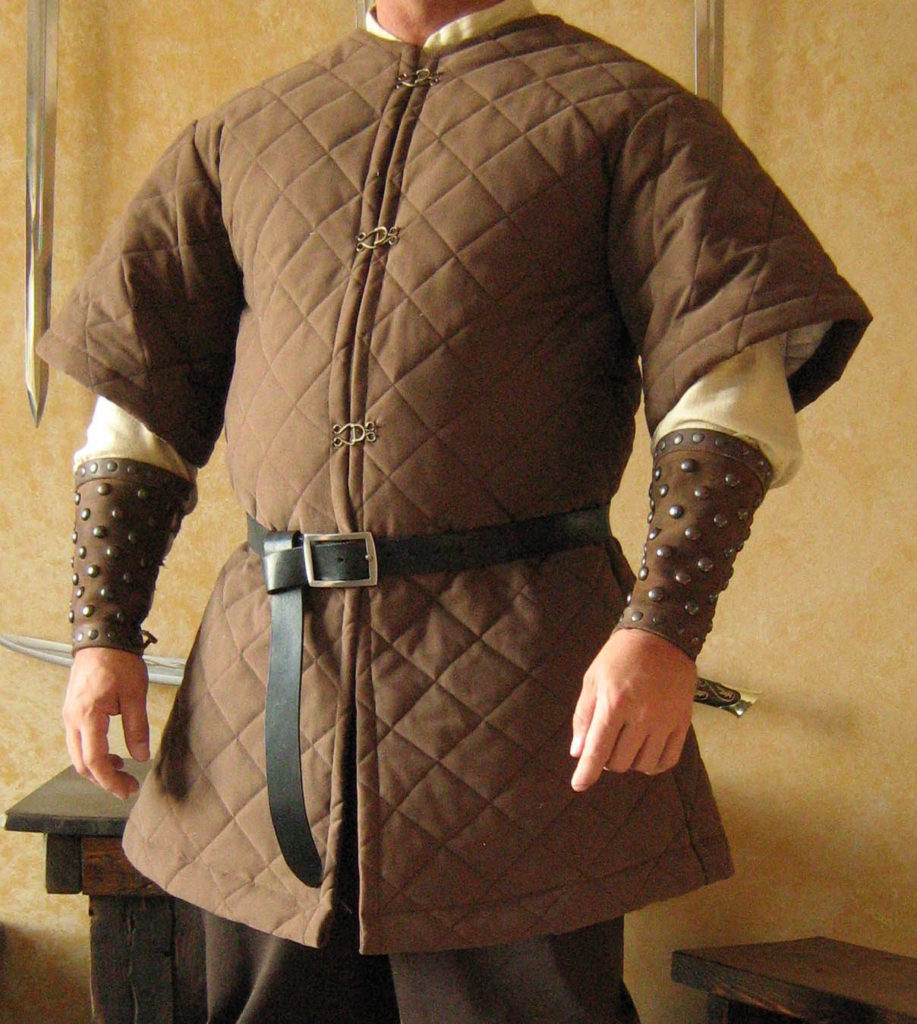
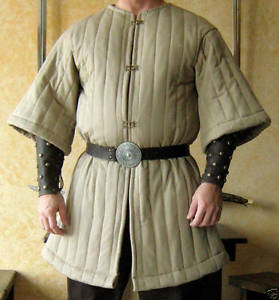
Other Armor in Dungeons and Dragons
Other types of armor were also worn in the game. And these were also worn in combat in the middle ages. Helms, gauntlets and greaves were often worn.
Shields
What’s armor without a shield? Some fighters prefer to wield a two handed weapon and forgo any defensive measures. Others, that tended to live longer, chose to put a shield between them and their enemy’s weapons.
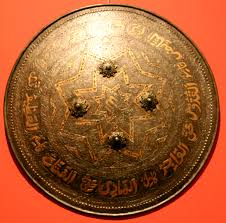
Shields came in many shapes and sizes. From a large round shield like above, to a small buckler, shields provided protection when needed.
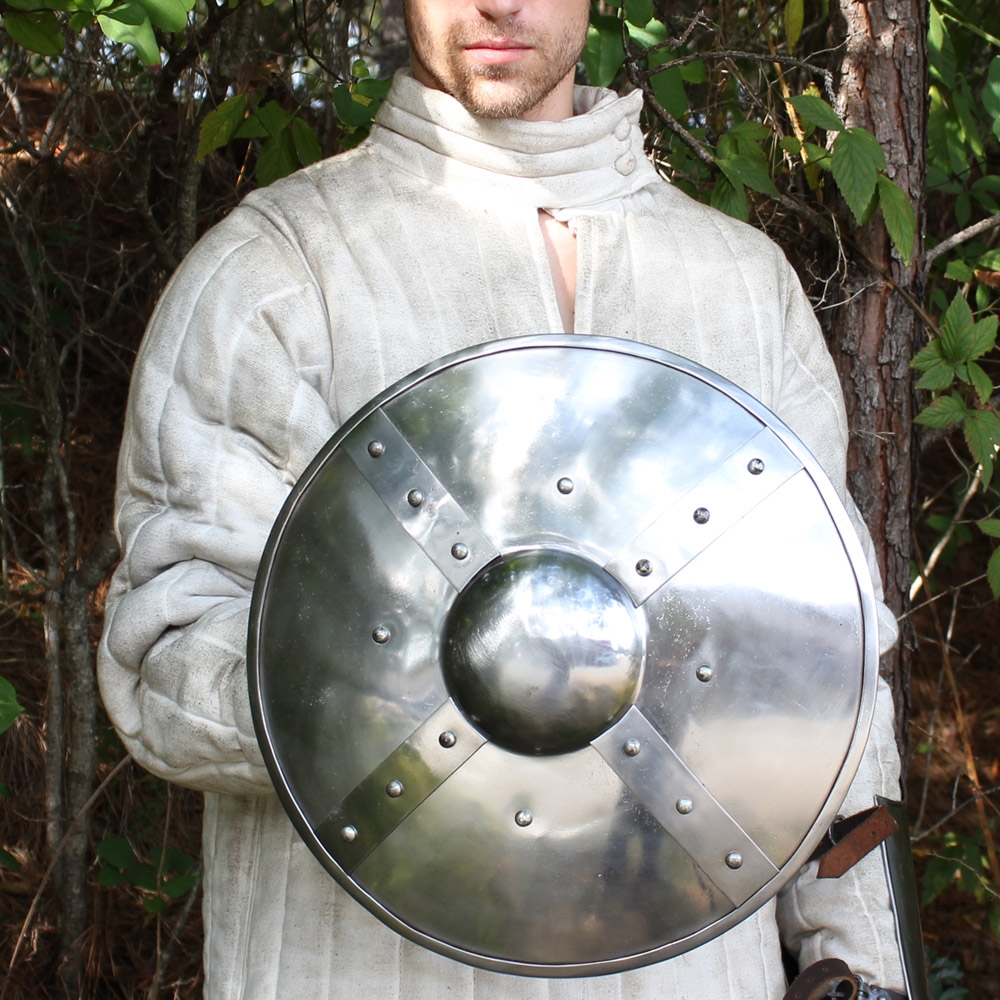
Sometimes shield carried the coat of arms of the knight or men at arms.
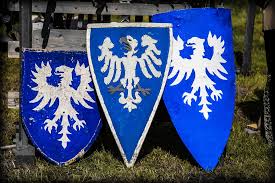
Helms
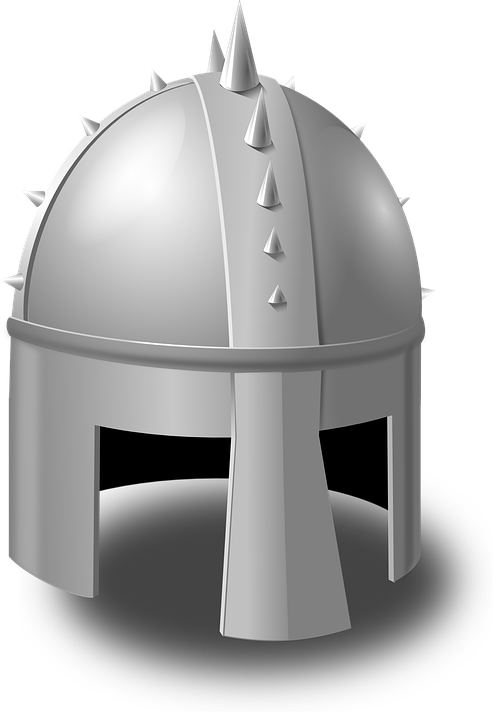
Like other types of armor helms came in many variations.
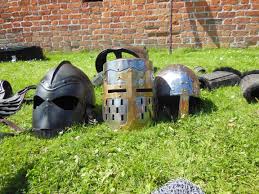
Some give more protection than others. Some cover the entire head and others cover only the skull. More armor may give more protection but it might also restrict visibility. Some sacrifices have to be made!
Gauntlets and Greaves
Gauntlets protect the hand and forearms. Greaves protect the legs. Both were possible targets by enemies wanting to kill you.

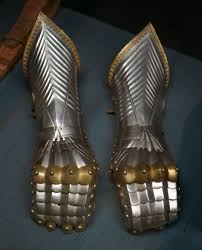
Greaves protected the legs from harm. Sometimes they had hinges to allow bending of the legs. Sometimes the lower leg armor was an entirely different piece.
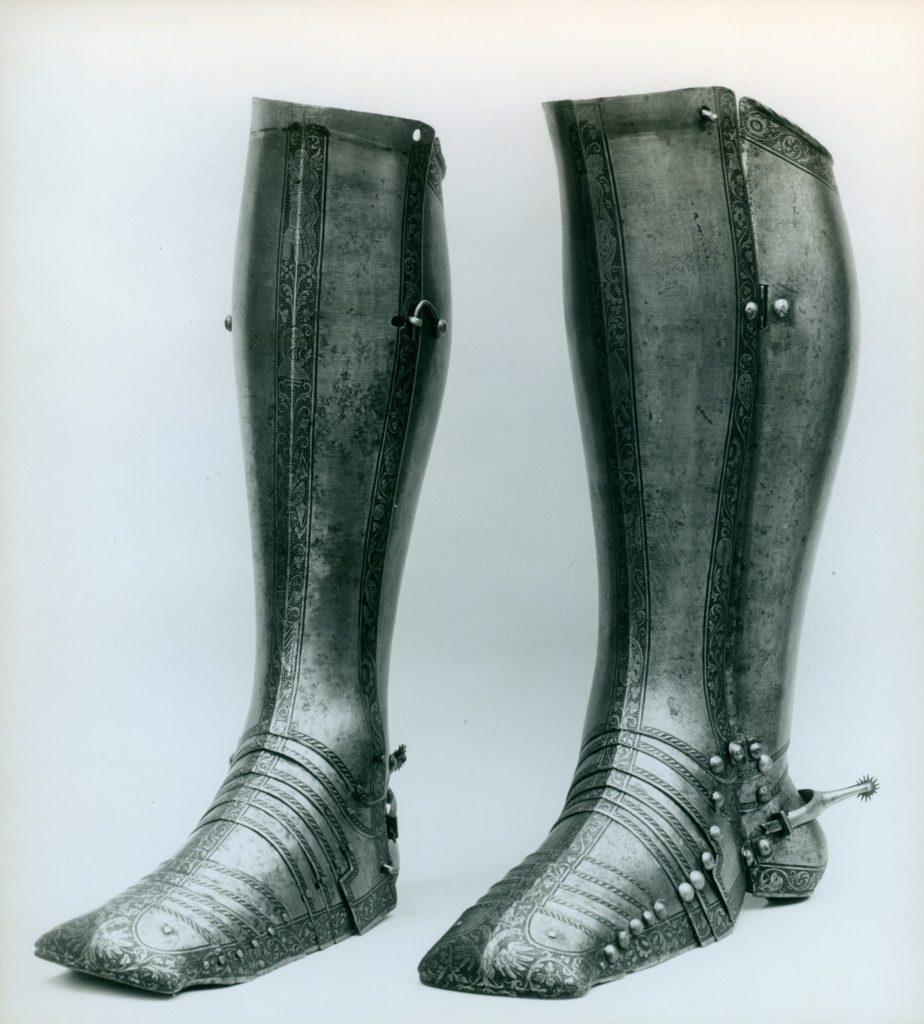
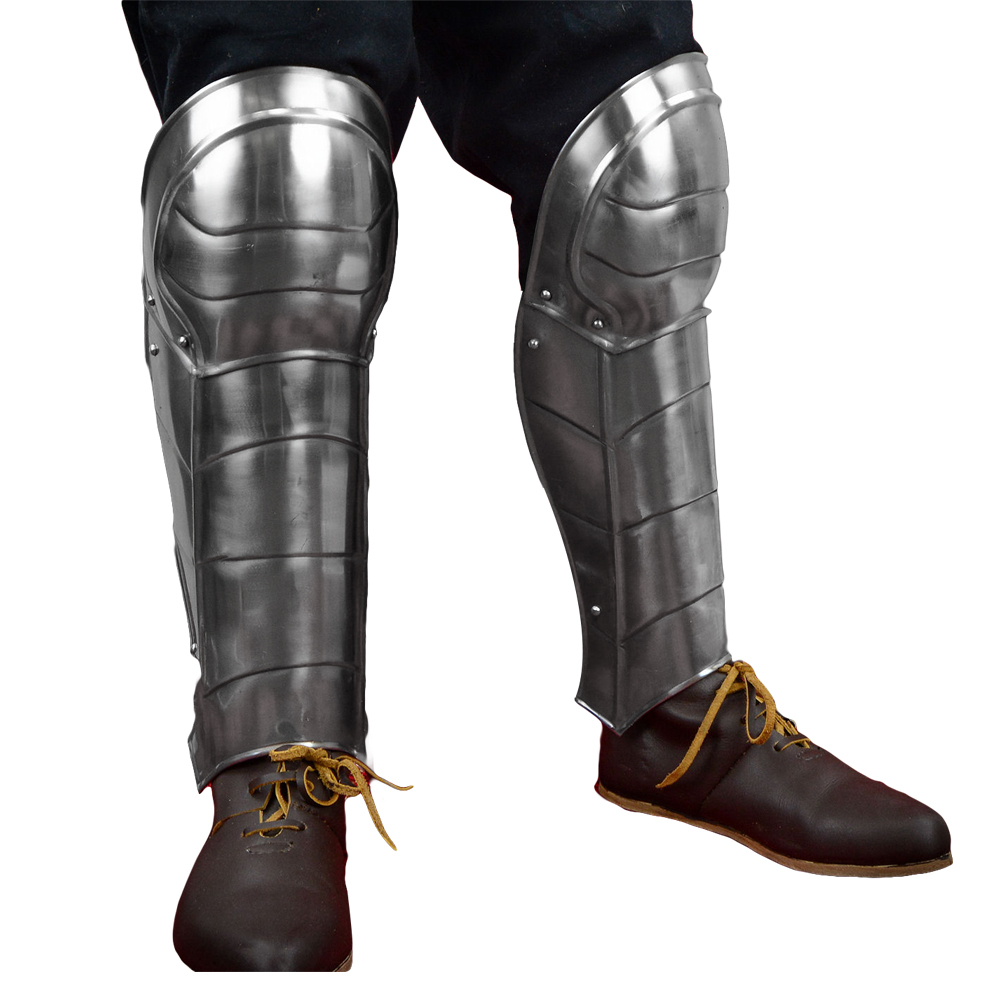
Horses Needed Protection Too
Horses were in danger during combat as well. And even in a joust there was the possibility that the horse might catch a lance by mistake. To protect the animal armor was made for their protection as well. It was called Barding. And barding existed in 1st Edition. Hardly anyone used it except for NPCs perhaps. But one riding into battle might be well advised to have it. A horse could easily catch an arrow and that might result in a severe problem for the rider.
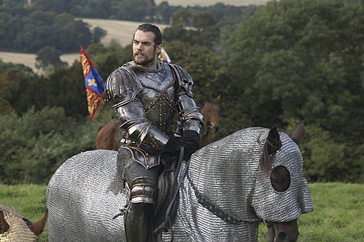
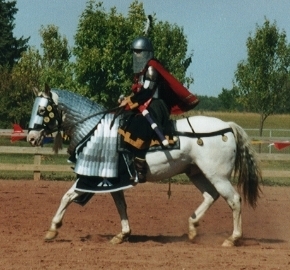
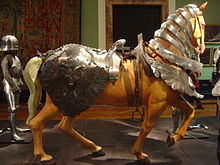
Armor In Dungeons and Dragons
As you can see there were many types of armor available for both man and beast. No one was safe in the medieval world and combat could be a very deadly place. Everyone needed protection.
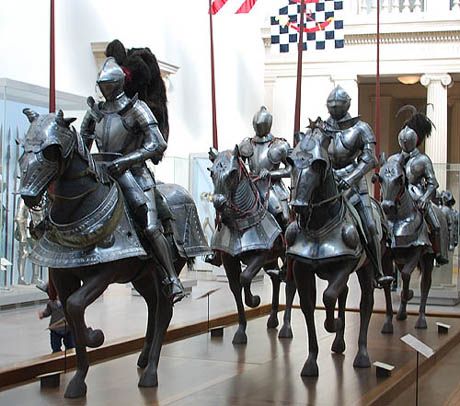
The only people not protected were the commoners. They had to rely on these guys with the gear to do the heavy lifting.
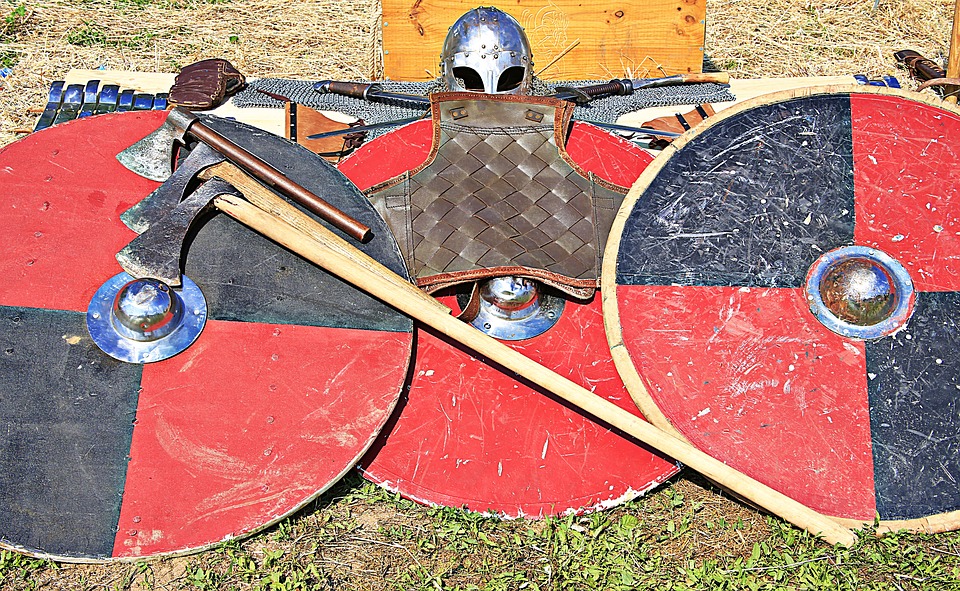
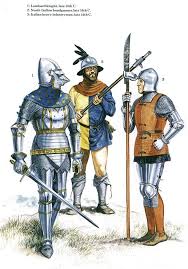


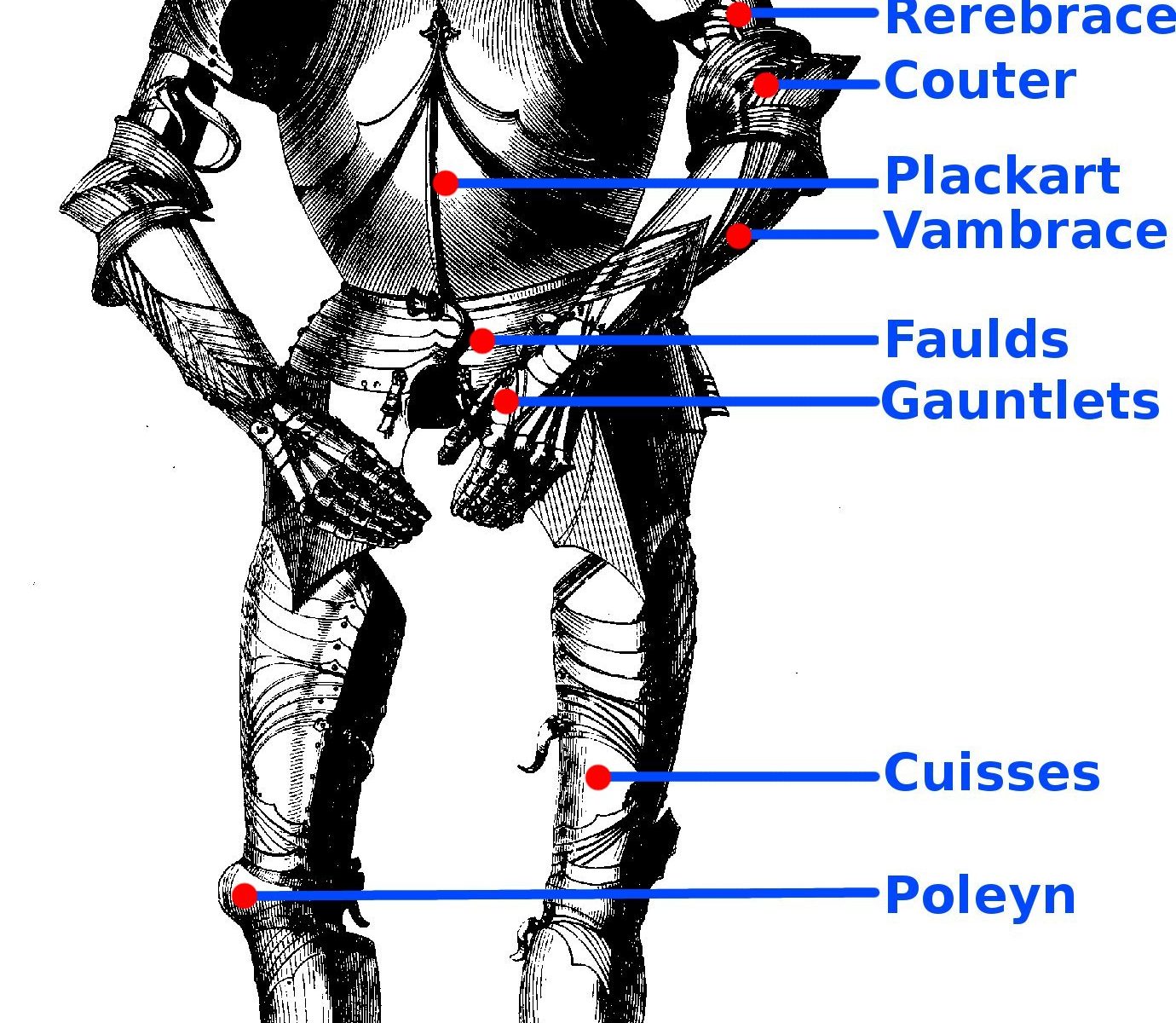
Your picture of studded leather is actually of brigandine, which is splint mail. The interior is a series of metal plates, and is worn over a padded gambeson and chain.
I have had a few people tell me this. But the site I took that picture from had it designated as Splint so I went with it.